#noctuid moth
Video
Green-brindled Crescent (Allophyes oxyacanthae) - scale details by Will Atkins
Via Flickr:
from the garden, Hertfordshire
#green-brindled crescent#green-brindled crescent moth#Allophyes#Allophyes oxyacanthae#Noctuidae#Noctuid moth#Noctuids#Wildlife#Wildlife of Europe#European Wildlife#Animal#Nature#insect#Insects#Insects of Europe#Insects of Britain#Lepidoptera#Lepidoptera of Europe#UK Lepidoptera#British Lepidoptera#Hertfordshire Lepidoptera#moths#Moth#moths of Europe#UK Moths#British Wildlife#British moths#UK wildlife#Hertfordshire wildlife#Hertfordshire moths
6 notes
·
View notes
Text

Noctuid caterpillar
Nov 13 2020
Thanks to @onenicebugperday for ID :D
4 notes
·
View notes
Text

Pink Noctuid Moth (Philareta treitschki), family Noctuidae, Turkey
photograph by Alperen YAYLA
3K notes
·
View notes
Text
tangentially related to the tags of that last post. i think if anyone were to put a living saturniid on my hands and let it crawl around i would actually cry /pos
#moth mumbles#we don’t really get them here and i’m a Big Fan#(i am however content with the noctuids we get. they’re so pretty sometimes
1 note
·
View note
Text
I think we all know how horrible a "well-maintained" lawn is for wildlife, native plant life, and really every conceivable life-form other than turfgrass. but how do animals use a lawn that's not treated with fertilizers or toxins, and has some diversity of flora & fungi?
I asked this question when testing out my camera a while back this autumn, and set out to find as many animals in a small patch of grass as possible in half an hour. I was quite surprised with the results: more things can live in a lawn then I ever realized!
I don't think any of these little guys are endangered in any way, but they made me wonder how many tiny grassy critters that might actually be in peril get ignored in favor of butterflies and birds simply because they're always literally underfoot. so I hope you can appreciate a weedy old lawn and its not-too-rare arthropod fauna. they're my little neighbors and I love them
(lots of photos below!)
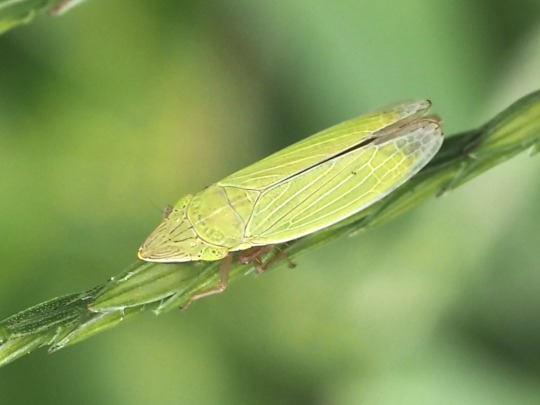
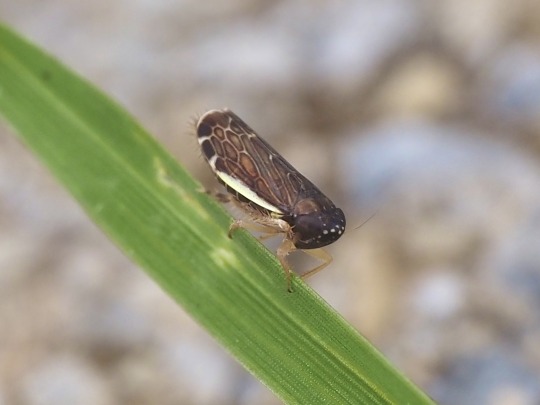
leafhoppers first, since there’s so many!Draeculacephala antica, big pointy green, & Planicephalus, a bug with a lot of personality
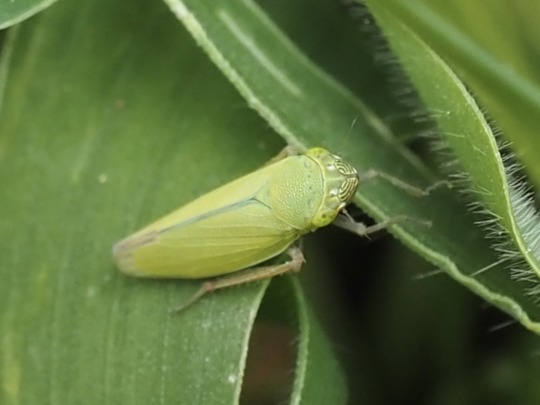
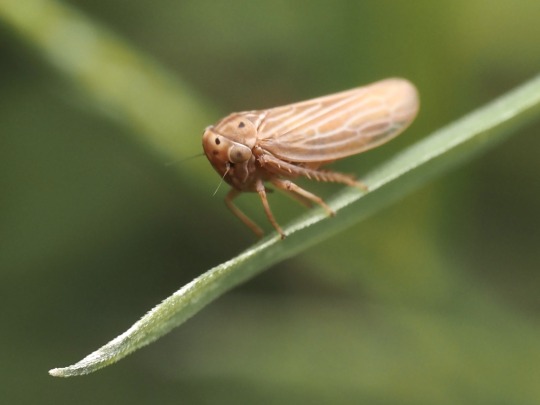
Helochara communis, the “Bog Leafhopper,” and Agallia constricta, a very numerous species here.

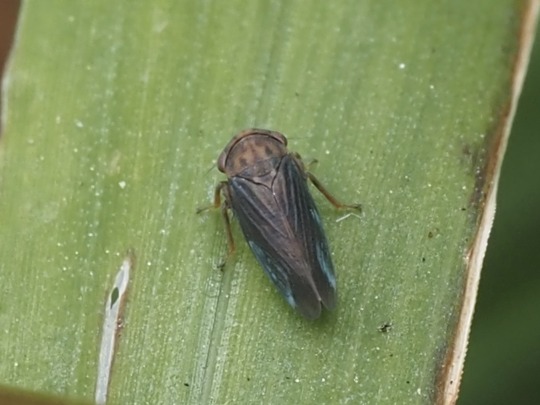
Polyamia weedi (great name) and a tiny Agallia that might be A. deleta but I’d probably have to chop it up to be sure.


Dikraneura arizona was the most common species at this time of year, there must have been dozens. Anoscopus is a creeping squat leafhopper that can jump quite far.
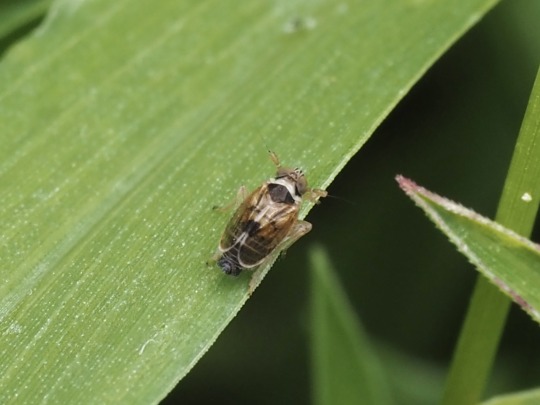
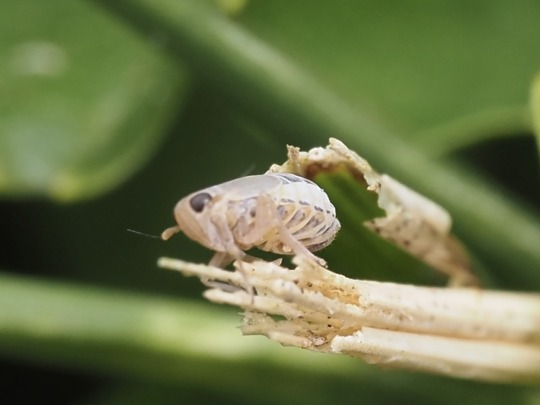
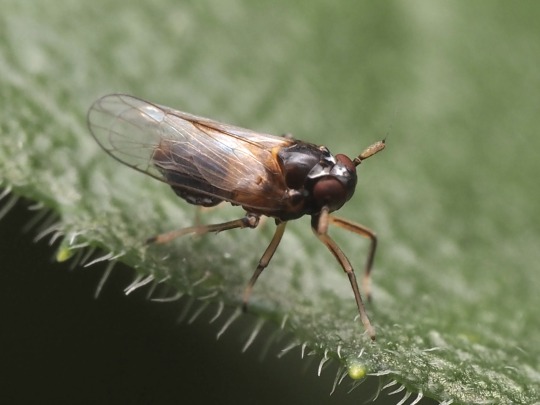
Chionomus puellus is the first delphacid planthopper, while the others are Pissonotus sp. delphacids can mature into short, medium, and long-winged forms, so the latter two might be the same species with different phenotypes! how wild


Microtechnites bracteatus is a tiny mirid bug that jumps. Chaetocnema is a flea beetle, which also jumps!
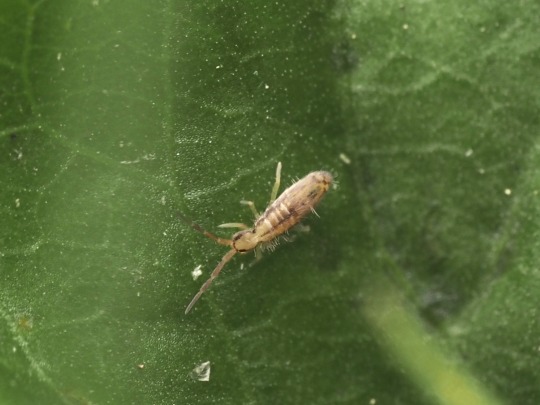
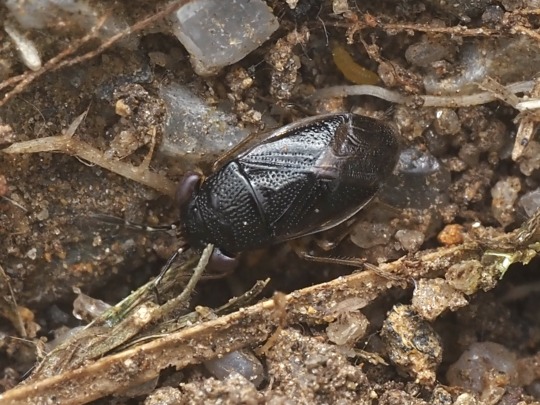
Homidia socia jumps too, since it’s a springtail! the big-eyed ground bug Geocoris uliginosus does not jump.
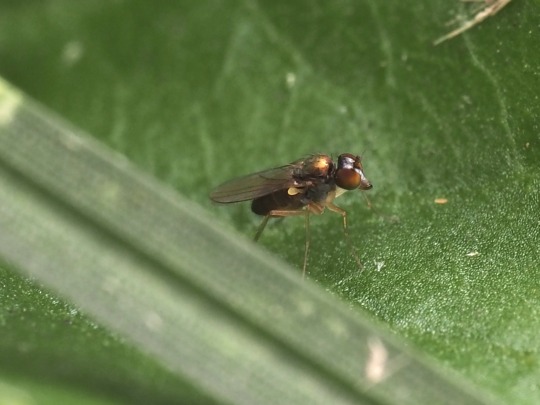
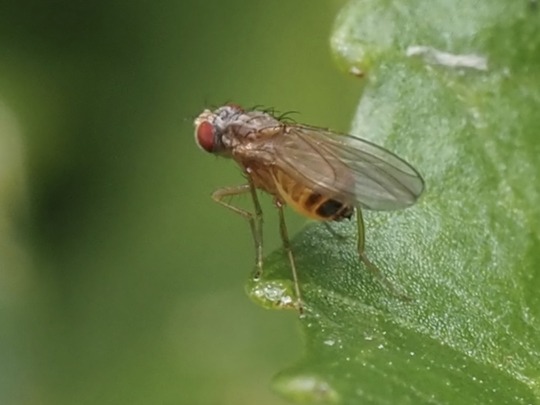


some flies: a predatory Chrysotus, a leafminer (?), a scavenger phorid fly, and a whitefly. the whitefly isn’t a fly.
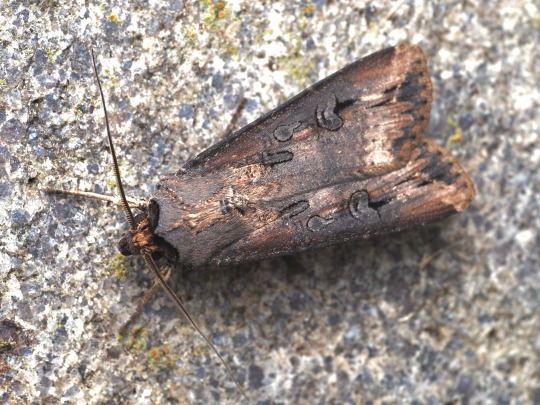
the largest animal I saw was Agrotis ipsilon, a noctuid moth.

Agriphila ruricolellus was also bigger than most.
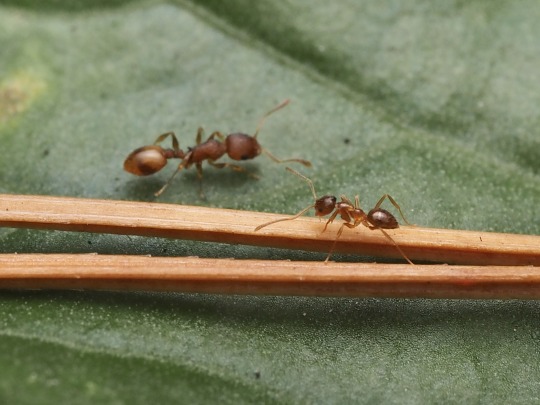
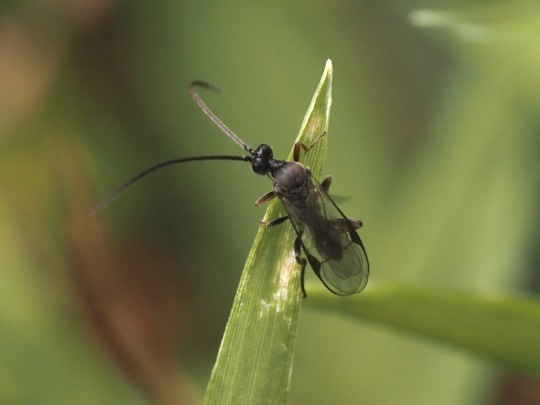
Temnothorax and some other ant, a braconid wasp too.
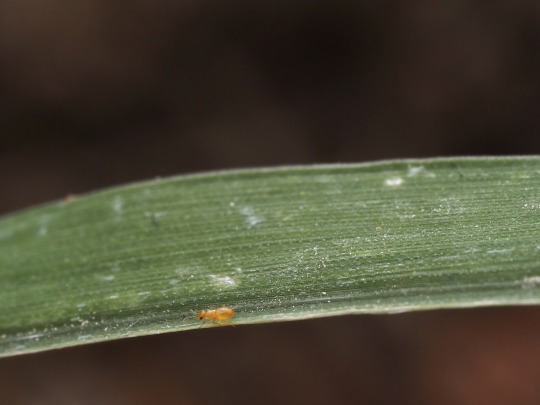
lastly, an incredibly tiny parasitoid wasp of some sort. I think five would have plenty of legroom on the dot if this “i”.
559 notes
·
View notes
Text




halloween-colored noctuid moth (episteme bisma) | source
#stim#halloween#moths#insects#sfw#bugs#black#orange#white#yellow#episteme bisma#noctuidae#owlet moths#animals#wings#hands#ishy gifs#postish
462 notes
·
View notes
Note

I thought I'd share the beautiful guy I found in northeast Georgia. Was careful not to touch him as the hairs seemed defensive, but had to get a picture of his incredible appearance. Would you be able to ID him?
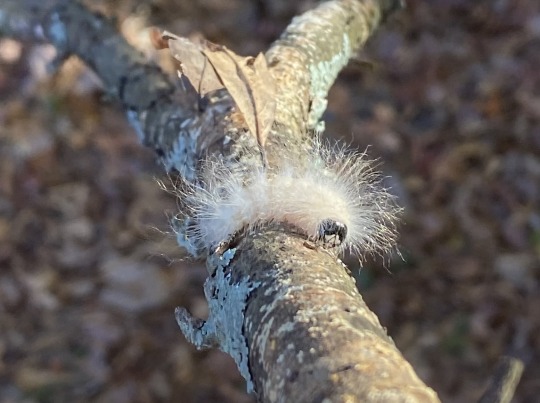
Ohhhh VERY fuzzy child. I love them. They're a noctuid moth in the genus Charadra, most likely a laugher moth, Charadra deridens.
Here's an adult:

Photo by gaudettelaura
184 notes
·
View notes
Text
hi! i found this little grub underneath a rock (went out after some rain, midday) and im not sure what it is. up in northern california!

noctuid cutworm moth larva, I can’t get species without adult
17 notes
·
View notes
Text

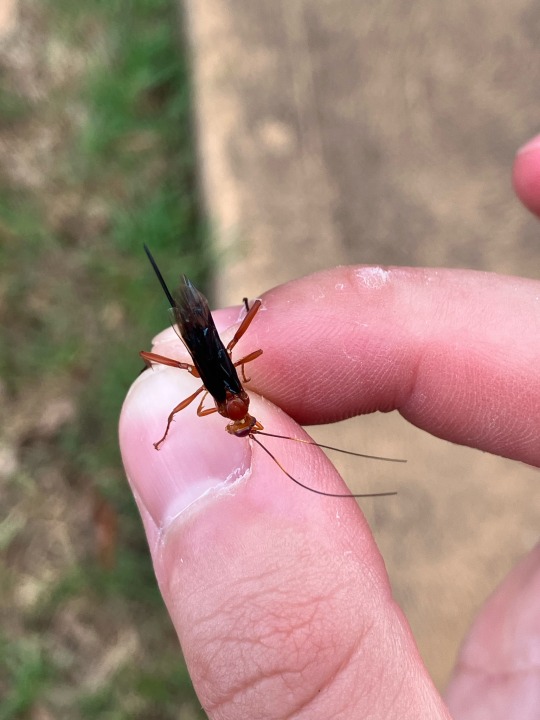
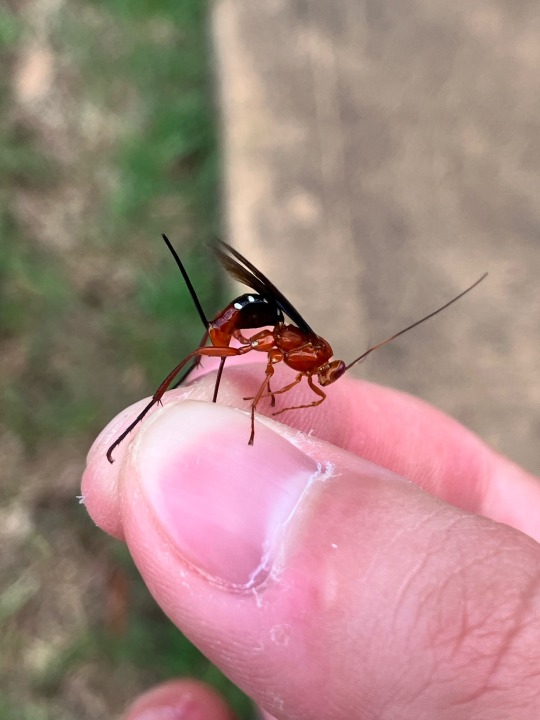
Grabbed a female Orchid Dupe Wasp today.
There’s TONS of these flying around my backyard at the moment.
They’re a type of parasitic wasp native to Australia but also found in New Zealand.
As the name suggest they’re polinators of all five Australian members of the orchid genus cryptostylus. That being the male wasps of this species literally fuck the orchids to the point of ejaculation. On the orchids. Literally. They fuck the flowers.
As for the parasitic part this species parasitised one specific member of the Noctuid moths being the Helicoverpa Armigera moth.
4 notes
·
View notes
Text


[PHOTOS TAKEN: JUNE 28TH, 2023 | Image IDs: Two photos of two insects on a leafy green plant, the first focused on a shiny black true bug in front (potentially Cydnidae) while the second is focused on a grey striped noctuid moth caterpillar behind it /End IDs.]
#true bugs#hemiptera#caterpillars#moths#noctuidae#lepidoptera#insects#insect#bug#bugs#bugblr#entomology#arthropods#invertebrates#inverts#photos#photo#Wasp House Sights
11 notes
·
View notes
Note
You mentioned it before so now I must know: Which bug has Gonta assigned each of his friends to and for what reason?
OKAY HERE WE GO BABY
Shuichi- blue noctuid moth! Shuichi has big moth vibes, and (according to research the author has done) this moth is sometimes associated with death :) but it is very pretty
Kirumi- orb weaver spider! Spiders are arachnids, not insects, but Gonta still likes them- and orb weavers are very delicate and organized spiders, often observed tearing down and rebuilding their web daily (i have seen this with my own eyes it rocks)
Korekiyo- praying mantis! Tall and thin, can come across as unsettling, but is sorta just minding its own business. Stares at you for too long.
Himiko- ladybug! Small and cute and round, with a similar color scheme and habit of just hanging out wherever they feel like. Also fall asleep like…. As soon as they are somewhere cold or dark. Which is endearing
Ryoma- June Bug! (June beetle) a small, round, endearing beetle in the scarab family. Are very small and resilient (despite their clumsy and self destructive flight patterns)often used to symbolize transformation? Apparently? Christmas beetle would also work for him tbh.
Kaito- firefly! (Lightning bug, fire bug, etc) while not as flashy as Kaito tends to be at first glance, these little show stoppers quite literally light up the night sky like little stars in lonely rural eras
Angie- painted lady butterfly! Maybe a little obvious, but this tiny butterfly has splattered oranges and white and black across its wings to make a vibrant pattern! They also fly around very excitedly, and are attracted to bright colored flowers like echinacea or sunflowers
Rantaro- Atlas Moth! A large, striking moth found in many parts of Asia, with beautiful eye markings and wings that bare a strange resemblance to cobra heads as well. Often used to symbolize travel and wandering
Miu- primrose moth! partially for her signature pink and yellow color scheme, partially for their pickiness when it comes to host plants, and partially because these little critters are often active day and night once they pupate and reach adulthood.
Kiibo- Pill bug! (Rolly Polly, Armadillo Bug, etc) a tiny isopod that’s more related to shrimp and crustaceans than true insects, with slate gray armored backs they have a tendency to hide behind if startled
Kokichi- Emperor Moth Caterpillar (and the moth itself) a very flashy little creature with eye designs and frills along its body to trick predators, known for that one metaphor that symbolizes life’s struggles
Kaede- Monarch Butterfly! A delicate but incredibly resilient butterfly with very vibrant colors!! Often used to symbolize strength and endurance
Tenko- Grasshopper! A high energy insect found all over the world, known for their high jumps and cute little chirps
Maki- Glasswing Butterfly! Small, delicate butterflies with translucent wings they used to blend in with their surroundings. Pollinate and lay their eggs on plants in the poisonous nightshade family
Tsumugi- Leaf Cutter Bee! While a little more plain looking than other bee species (heh heh) these bees are very unique! They cut parts of leaves to make their home, stitching together little nests for winter.
Gonta sees himself as a rhino beetle, big and silly and strong enough to protect his friends!!
#rambling#asks#long post#can you tell I almost went to school for agricultural science lol#all I know are the pollinator bugs and pest control bugs#I love bugs so much#danganronpa
6 notes
·
View notes
Note
Noc i think you are a moth
a noctuid. naturally
19 notes
·
View notes
Photo
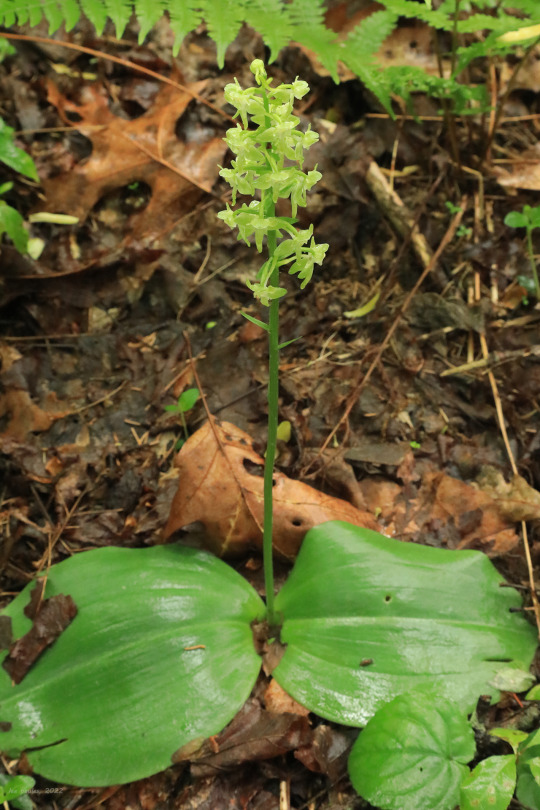

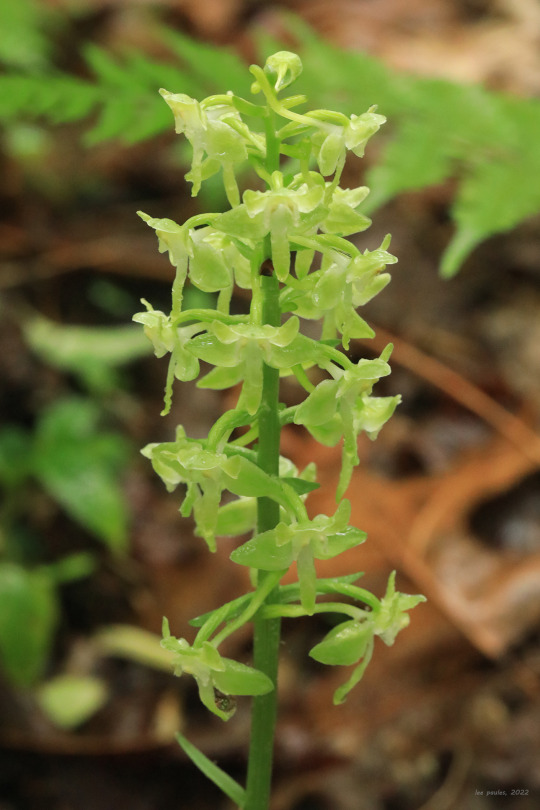
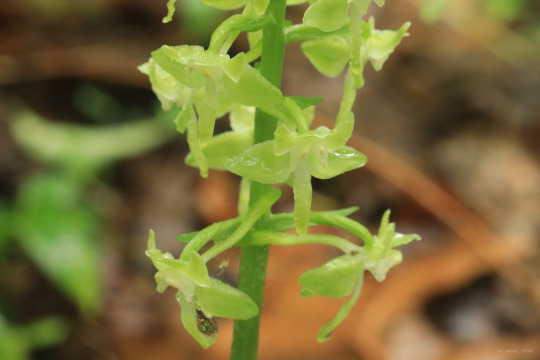

Round-leaved rein orchid (Platanthera orbiculata) is one of the great finds of Appalachia’s late spring woods. Although it has a wide distribution throughout Canada, the northern US, and the Appalachian Mountains, this tall, striking perennial is very picky about where it grows (shady bogs and upland pine woods) and is never abundant where it occurs. It’s also an elusive beauty, as its crane-like, creamy-green flowers blend in perfectly with the forest’s late spring greens. This orchid is immediately identifiable by its large, elliptical basal leaves, which rest flat against the ground. This feature leads to the plant’s more familiar name: dinner-plate orchid. What its flowers lack in bold colors they more than compensate for in their unusual form, most notably the somewhat-arched sepal that makes a hood over a pair of creamy-colored pollen sacs, which attract noctuid moths. Fortunately, I know a couple of spots in Coopers Rock State Forest where this orchid grows - it’s always a joy for me to find it in bloom.
#appalachia#vandalia#west virginia#spring#wildflowers#flora#orchidaceae#platanthera orbiculata#round-leaved rein orchid#dinner-plate orchid#dinner plate orchid#coopers rock state forest
37 notes
·
View notes
Text

Finally redesigned Gummi <3 she’s based off a blue noctuid moth
She’s the blue empress <3
4 notes
·
View notes
Text
July 20th, 2022

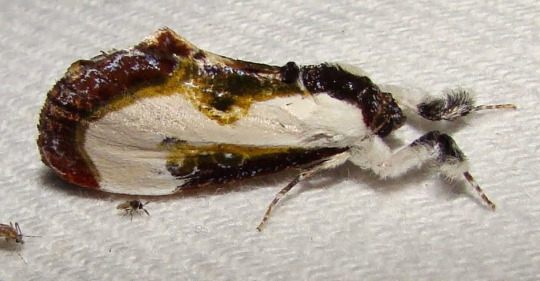
Beautiful Wood-Nymph (Eudryas grata)
Beautiful indeed, the beautiful wood-nymph is a moth best known for its mimicry of something decidedly unbeautiful—a splat of bird droppings, complete with outstretched fuzzy legs to imitate the runny bits. These mid-sized moths are found throughout eastern North America, conspicuously camouflaged on leaves and vines at forest edges, allowing their caterpillars to feed on Virginia creeper plants.
Adult wood-nymphs do not eat, instead reserving their energy on finding a mate to reproduce with. Eggs are deposited on Virginia creepers and grape vines, which the caterpillars munch on when they hatch. They can be quite the pest to vineyards!
As noctuid moths, beautiful wood-nymphs possess tympana, a pair of auditory organs specialized in hearing high frequencies. This allows these moths to detect the chirping of bats, which lets them evade their primary predator with an erratic flight pattern.
1 note
·
View note
Text
harvesting leaf litter for the isopods today and because I handpick it I can make sure I don’t hurt any bycatch. I found three little caterpillars and made sure to put them aside and replace them after picking up the leaves.

there’s a cutworm moth (noctuid), a skipper butterfly(hesperiid), and a litter moth (erebid). I also saw dozens of ghost spiders, a couple weevils, and lots of rove beetles.
leaf litter is a necessary home (and food! the litter moth eats detritus) to so many animals over the winter. if you live in a place with deciduous trees leave the litter be, or at least move it somewhere that the critters can rest until spring.
492 notes
·
View notes
